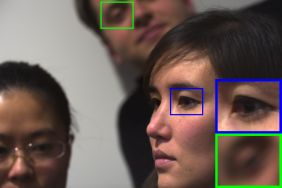
The Lattice-focal lens
Depth of field (DOF), the range of scene depths that appear sharp in a photograph, poses a fundamental tradeoff in photography---wide apertures are important to reduce imaging noise, but they also increase defocus blur. Recent advances in computational imaging modify the acquisition process to extend the DOF through deconvolution. Because deconvolution quality is a tight function of the frequency power spectrum of the defocus kernel, designs with high spectra are desirable. In this paper we study how to design effective extended-DOF systems, and show an upper bound on the maximal power spectrum that can be achieved. We analyze defocus kernels in the 4D light field space and show that in the frequency domain, only a low-dimensional 3D manifold contributes to focus. Thus, to maximize the defocus spectrum, imaging systems should concentrate their limited energy on this manifold. We review several computational imaging systems and show either that they spend energy outside the focal manifold or do not achieve a high spectrum over the DOF. Guided by this analysis we introduce the lattice-focal lens, which concentrates energy at the low-dimensional focal manifold and achieves a higher power spectrum than previous designs. We have built a prototype lattice-focal lens and present extended depth of field results.
|

The Lattice-focal lens |

|

|

|
lattice-focal lens |